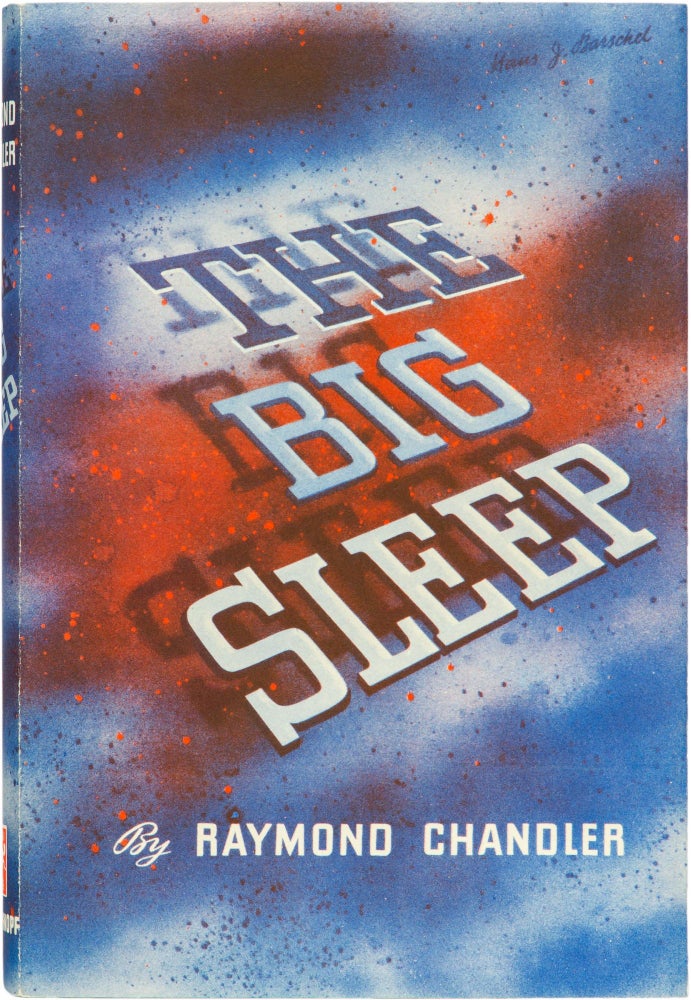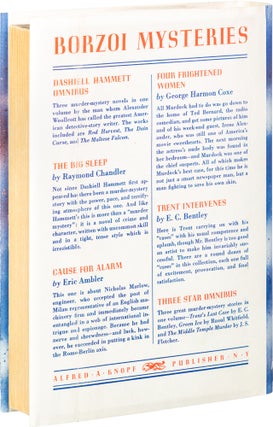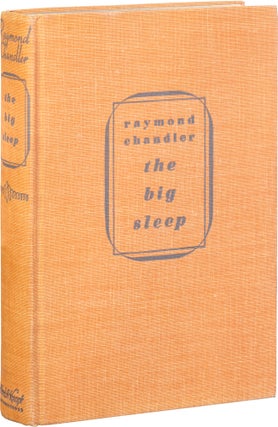The Big Sleep
New York: Knopf, 1939. First Edition. cloth. 1st edition of his first book. Near fine in a fine dust jacket, a crease on the back, but fresher than an Italian bachelor, luminous and pristine, with lively colors (whites on the spine are bright white), a fugitive from the law of averages. Near fine / Fine. Item #1
Here is a dust jacket that glows in places that other jackets don’t even have places, one that could only be brighter if it had an arc of blue electricity around it, ideal for an old elephant hunting the youngest leaves at the top of the tree. In contrast, for half our price, you can buy one in a very good jacket (repaired ones should be even cheaper), but copies that are not fine will prove common forever, and deliver all the lasting pride of a Thanksgiving Day trash bag torn open in a winter wind. And don’t fall for spangled online descriptions praising other Big Sleep jackets as being in fine condition compared to this one, because the itch to hedge such narratives spurs more lies than taxes, sex, diets, profiles, and resumes, but our copy is all good chi. Welcome to the high ground. Breathe the clean air in the biblioctosphere. The Big Sleep introduces Philip Marlowe (the detective), patient as a sorrow and solitary as an oyster, poking around a rootless L. A. run by The Combination, in the days before SoCal took itself seriously, half a sleepy town, half an emerging metropolis, filled with all the risks and none of the monitoring still commonly met with in adolescent cities. The Big Sleep also introduces Raymond Chandler (the writer), polished and subtle, skilled beyond his genre of choice, and able beyond even his mainstream peers. He sets the novel in his present, during the depression, so money influences all the action, and everybody is disillusioned and cynical, including Marlowe, but Marlowe owns his morality, a white cavalier alone in the noir, and Chandler’s control of symbolism pictures him (in the beginning) posed as a knight in a stained glass window, and later (in action) with a knight’s move on a chess board. And there are contrasts, like the deserted oil fields with rusted pumps, the very oil fields that made General Sternwood his millions, analogized against the luxury of his home, grand and gaudy, which has come out of the oil fields, although the place from which the money came is a ruin. And Chandler can paint too, and does so with an ambiance that is thick and shady and corrupt, but still familiar, and there is foreshadowing (“It was going to rain soon. There was pressure in the air already”), so the reader is inclined to guess where events are going but seldom gets it right. And then there are his characters, who all get double crossed, but behave believably, and his lovely tropes, sarcasm's, and rhetorical devices, and most obvious of all, is the complexity of his plot line, wherein sequence flows from necessity, though not all the loose ends get tied in resolution (Who killed the Chauffeur?). And at any point in the story someone, or something, new may enter from stage left with potent impact.
Price:
$30,000.00




